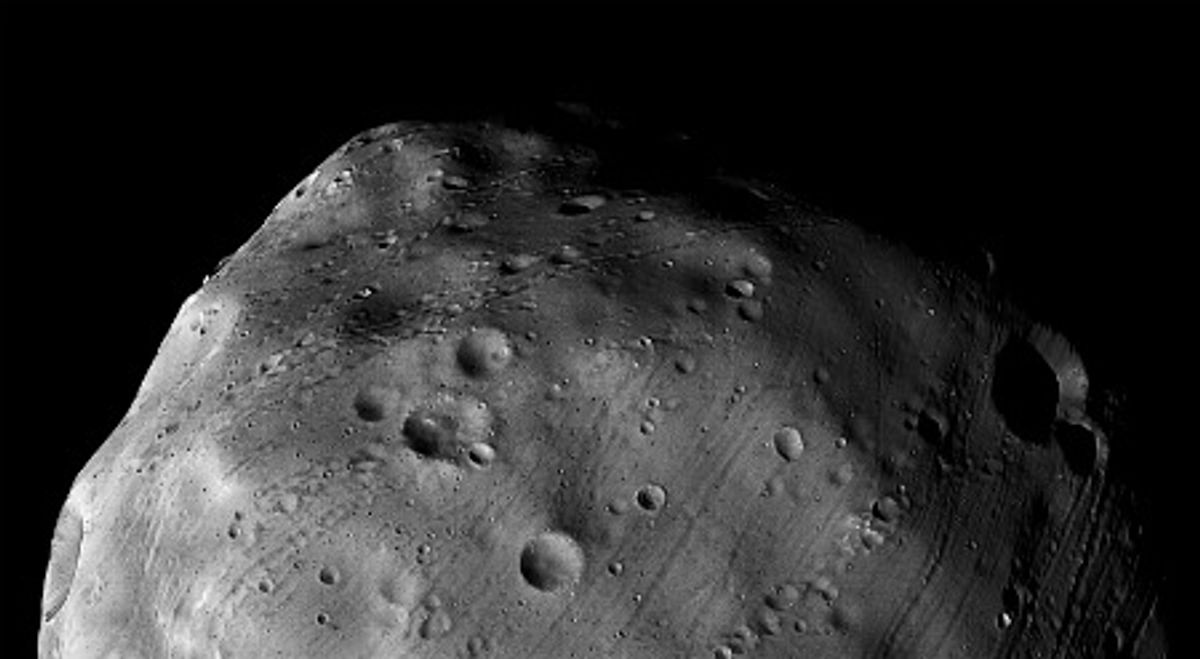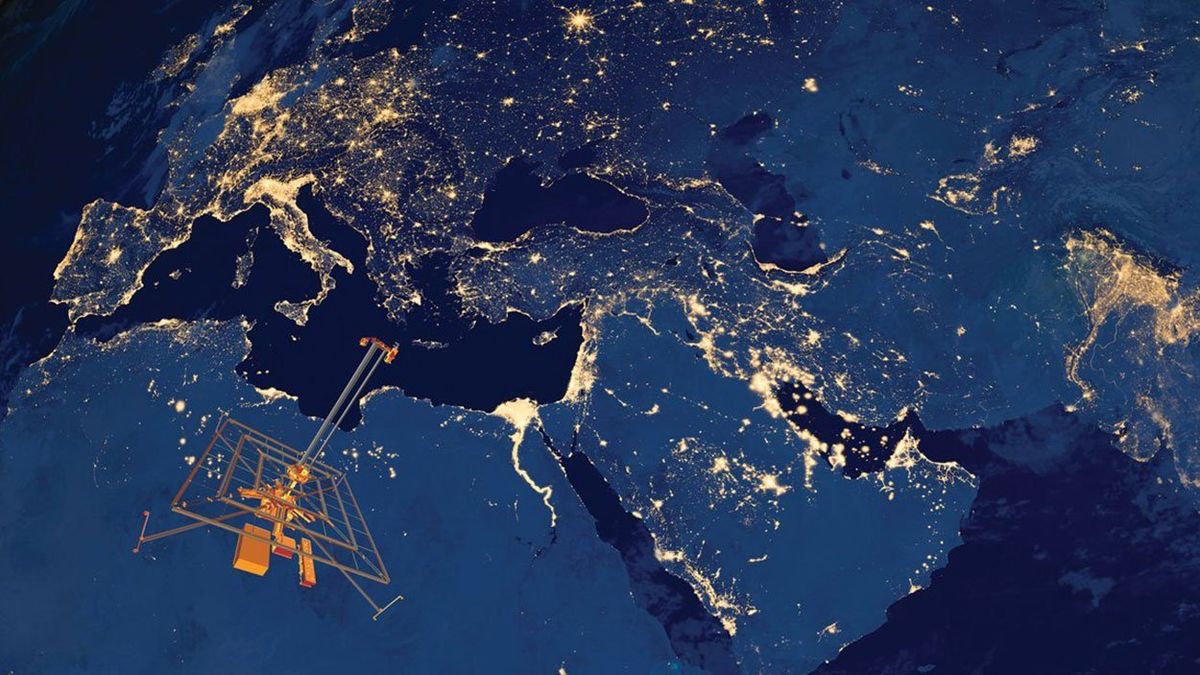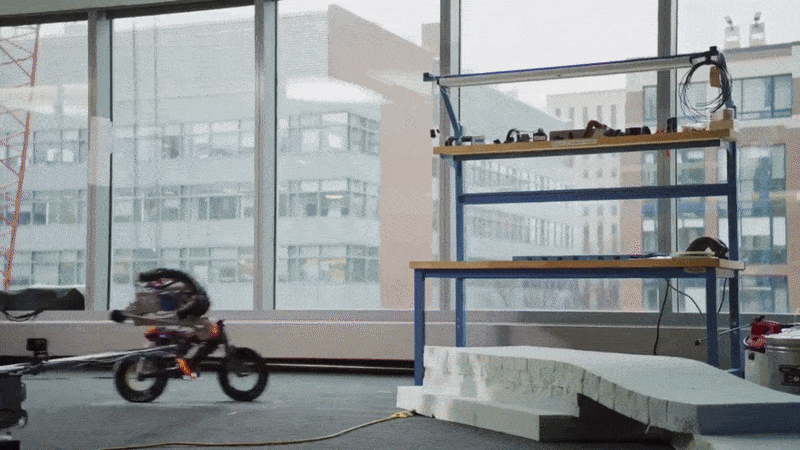Pockmarked, potato-shaped, and the size of a modest asteroid, the Martian moon Phobos doesn’t look like it should rank high on any list of must-see solar system destinations.
But don’t count Phobos out. Scientifically speaking, the diminutive moon is great quarry: no one is quite sure how it formed and achieved its orbit around the Red Planet. The moon’s surface might also be a treasure trove of Martian material, dusted with a generous layer of debris cast into space when Mars was bombarded by asteroids soon after the planet's formation. Practically speaking, Phobos is also relatively easy to visit; the moon's gravity is so easy to escape that Phobos is considered an attractive destination for astronauts, a training opportunity that could help pave the way for a manned mission to Mars.
No one has gone to Phobos and come back...yet. But on Tuesday, Russia will make an ambitious attempt to be the first when it sends the spacecraft Phobos-Grunt to retrieve a sample of the moon's surface. The mission, Russia's first attempt to reach the Red Planet in 15 years, is slated to take off at 12:15 am Moscow time on Wednesday (3:15 pm EST on Tuesday) from Russia’s Baikonur Cosmodrome in Kazakhstan.
If the launch succeeds, Phobos-Grunt (grunt is the Russian word for "soil") will spend 11 months traveling to Mars and then a few months in orbit before finally setting down on Phobos in early 2013. Once there, the spacecraft, which will weigh about 400 grams on the moon’s surface, will use a robotic arm to scoop up about 200 grams of soil into a capsule. A smaller return spacecraft will make the return trip to Earth, where it will land without a parachute in August 2014.
Sample return missions are nothing new: the most recent success goes to Japan’s Hayabusa spacecraft, which returned to Earth last year with particles collected from the asteroid 25143 Itokawa. But these sorts of robotic retrieval missions are certainly not routine, and Russia has had a particularly difficult time with its Mars missions. The Soviet Union sent a total of 19 spacecraft to Mars, but “only four of them reached the Martian system, and none completed more than a fraction of its scientific work,” writer Anatoly Zak noted in our special issue on Mars. The first and only post-Soviet attempt—Mars 96—never made it out of low Earth orbit. "Mars has always been an inhospitable planet for Russia," Maxim Martynov of aerospace company NPO Lavochkin told Reuters.
Still hopes are high for Phobos-Grunt, which could very well put Russia back on the interplanetary exploration map. "The major outcome is that Russia might establish its credibility again," Roald Sagdeev, former director of the Space Research Institute (IKI) in Moscow, which developed many of the spacecraft’s science instruments told Nature. "It would open the door for major international missions."
The mission will also give China an opportunity to join the small group of nations that has performed science beyond the moon. China’s very first Mars orbiter, a small spacecraft called Yinghuo-1, will piggyback on the launch and separate from Phobos-Grunt when the spacecraft reaches Mars orbit.
Sample return is only one part of the Phobos-Grunt mission - the spacecraft's lander carries instruments that will do their own investigation of the moon's surface. Phobos-Grunt will also carry samples from Earth to Phobos, in an experiment spearheaded by The Planetary Society called LIFE, for Living Interplanetary Flight Experiment. LIFE will test how space radiation affects organisms once they are outside the protective cocoon of Earth’s magnetosphere. The roster includes bacteria, archea, as well as nature’s most adorable invertebrate – the tardigrade or water bear – a veteran of radiation experiments in low-Earth orbit.
Phobos-Grunt isn’t the only Mars-bound spacecraft poised to launch this month. NASA’s radioisotope-powered, 900-kg rover, the Mars Science Laboratory, is scheduled to launch on 25 November. The mission will boast the most sensitive suite of scientific instruments yet sent to the Red Planet. If all goes well, the mission could help determine the extent to which Mars was suitable for life.
(Image: ESA/DLR/FU Berlin/G. Neukum)
Rachel Courtland, an unabashed astronomy aficionado, is a former senior associate editor at Spectrum. She now works in the editorial department at Nature. At Spectrum, she wrote about a variety of engineering efforts, including the quest for energy-producing fusion at the National Ignition Facility and the hunt for dark matter using an ultraquiet radio receiver. In 2014, she received a Neal Award for her feature on shrinking transistors and how the semiconductor industry talks about the challenge.



